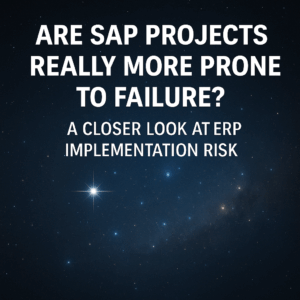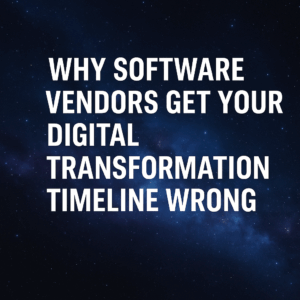When scaling to become a mid-size or large organization, there are pain points along the way. With any challenge births new opportunities, this begs the question, how do organizations scale from startup to $1 billion in revenue, and what are those growth and scaling points of inflection?
Most clients are in mid-market, high-growth companies that are expanding organically through M&A activity. At one point, a startup that had $0 in revenue became a billion-dollar global enterprise.
Table of Contents
ToggleStartup
The first phase of any organization’s lifecycle is the startup phase. Starting at zero, they have a bucket full of great ideas, concepts, a team in place, which means they are ready to hit the market and launch a growing company. With this model, organizations go through significant growth, often very quickly and sometimes awkwardly. They have early wins and successes but also may have slip-ups.
These companies often struggle in establishing initial business processes, and preliminary technologies to help automate operations and brand awareness initiatives. In the beginning, technologies are focused on the sales and financial management aspects of the business. Earlier in the cycle, these organizations are more likely to leverage CRM technologies, like automating sales processes. They are also likely to leverage marketing automation, growing exposure, and fueling demand for products or services.
These companies will likely implement QuickBooks or other accounting software to manage the basic financial and accounting operations.
That is the startup phase that organizations go through and is just 1 of 4 phases The duration of each phase varies. It depends on the growth pace, scalability of the business model, and overall resilience to overcoming challenges. In general, this is the first phase.
At a certain point in the startup phase, there becomes a breaking point due to scalability issues. The business will need to now figure out how to move from the startup chapter to the next phase.

Initial Scale
Once an organization hits this ceiling, there needs to be a strategic vision to transcend any roadblocks.. Here are a few examples of different organizations going through the scaling process.
- Manufacturing organization: Cannot scale up production fast enough to keep up with demand.
- Services organization: Cannot hire enough qualified people to manage processes for available services.
There is something holding back these organizations from getting to the next phase. What needs to happen now is breaking through the first stage to get to the initial scale. This is where scaling the operations of the business comes in. The focus shifts to getting basic processes in place, driving sales and marketing, and initial revenue and accounting.
A manufacturing organization at this point might start to consider manufacturing execution systems to help graduate to the next level of production. If it is a distribution organization, they might be thinking about a warehouse management system that will support growth.
Most organizations find ways through technology, business processes, and organizational improvements to ensure the business achieves the next level of success.
Most companies transition from a “gun-slinging, startup approach” to more of a mature process. This is the phase where companies get stuck because they culturally cannot make that shift. It’s a massive undertaking and, if not addressed appropriately, it can completely disrupt the overall business.
In addition to that culture, it’s essential to look at the business processes and the technologies that are enabled. Even in this initial and additional scaling phase, it is inevitable that there will be another sticking point before moving forward in the growth of the business.

Organizational Maturity
Once organizations have scaled up operations, typically they find that efficiency is lacking. This is where the panic sets in and people work to cover up any issues.
For example, a business may have implemented process improvements or innovative technologies to automate warehouse and manufacturing shop floors. However, it becomes apparent this bunch of disparate systems has created a patchwork or spaghetti approach to automating the processes. Here is where the scrambling starts to happen. Even though the organization has worked to establish these repeatable processes, the growth rate is starting to slow and this is where it is important to investigate how to optimize cost. To keep scaling and growing, they must figure out how to get to that next level of scale that focuses more on mature technologies and business processes.
Now the business may consider an ERP system to automate and tie together the entire operations. Instead of a hodgepodge of systems that have been pulling the organization in the wrong direction. It is key to start looking for more mature technologies that are establishing and focusing on repeatable processes and standardization.
Inevitably, these organizations end up tapping out as they have reached a mountain climb in order to reach that billion-dollar company.
Fueling More Growth
Once an organization is in this maturity phase, there is an inflection point where growth is no longer possible due to market saturation. New and creative ways to diversify revenue streams become the main survival tactic.
Another option is to change the core business model to stimulate growth. This approach requires new technologies, processes, innovative thinking, and fresh organizational designs to achieve the next level.
To start fueling for more growth, implanting predictive analytics is a suitable place to start. Anticipating customer demand provides data allowing the business to pivot to increase sales. These insights also constitute heightened competitive advantages.
E-commerce and customer experience types of software is another example that provides a stickier, common experience for customers that makes them more likely to establish a lasting relationship with a brand. This could drive the growth needed to move ahead.

Ongoing Growth
For this next phase, I want to point out a few caveats to this growth map. First, if we are talking about going from zero to $1 billion, this is not going to be quite as linear and sequential as I have outlined. Repeating these phrases multiple times may be a more accurate growth cycle.
Also, organizations spend different amounts of time and have diverse parameters for breaking through any roadblocks with each phase. Some companies get to $100 million just in this initial startup phase by using basic technologies and patching together the business processes. Others can only get to $5 million depending on the type of business or industry. In the end, it really depends on the organization, the type of product, the scalability of the product or service, and the overall experience of the leadership.
There are tools that can be used to get past each of these inflection points and barriers. Technology is one tactic, certainly, but in addition, it is important to take a more comprehensive business transformation approach.
Resources
I hope this has helped put things into perspective when it comes to how to fuel business growth in digital transformations. As more growth begins to happen, I encourage you to look into downloading our 2021 Annual Digital Transformation Report which provides best practices for how to deploy technology and also a more extensive list of ERP, CRM, and HCM systems.
If you have any questions regarding your business growth specifically or any additions/feedback, please don’t hesitate to reach out to me directly. I am happy to be an informal sounding board as you move through your digital transformation journey.






